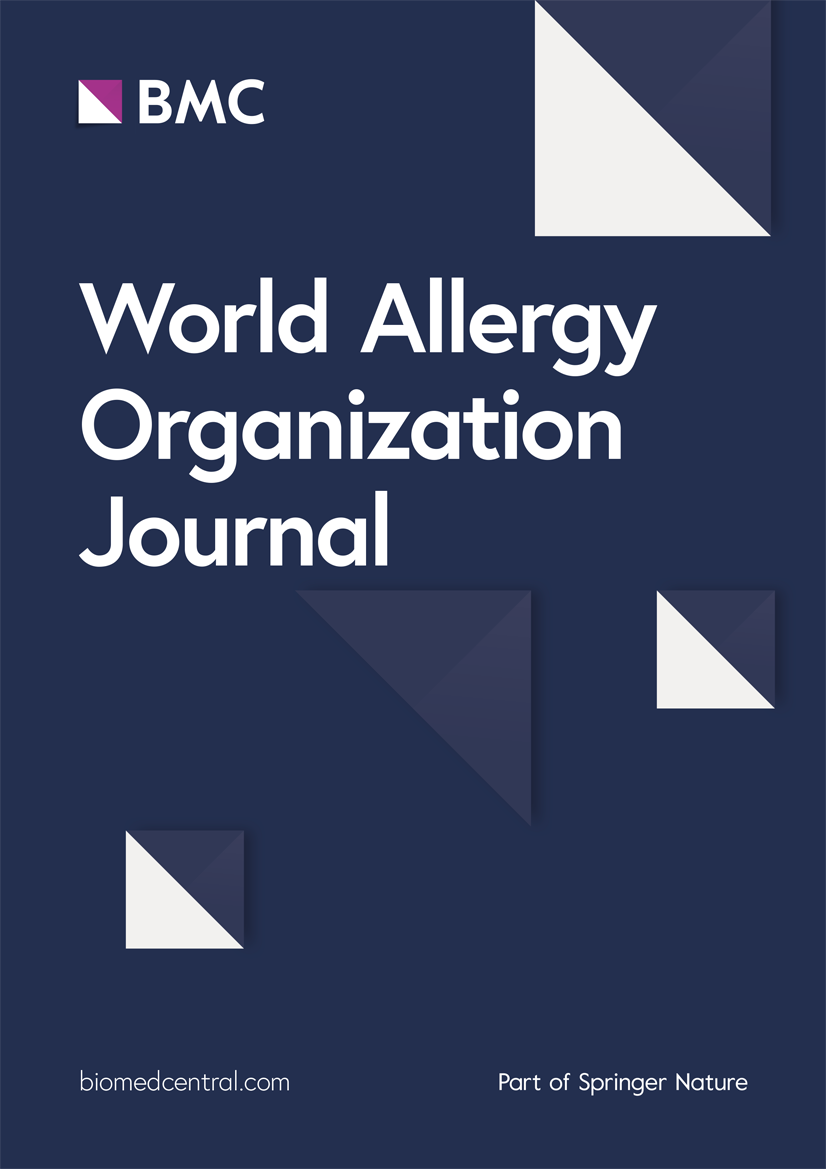Characterization of a major house dust mite allergen Der p 22 among Malaysian adult population
IF 4.3
2区 医学
Q2 ALLERGY
引用次数: 0
Abstract
Background
House dust mites (HDM) are a major trigger factor of allergic diseases worldwide.
Objective
To characterize the group 22 allergen from the HDM Dermatophagoides pteronyssinus among Malaysian atopic adults.
Methods
Recombinant Der p 22 and 33 alanine mutants were expressed in Escherichia coli and purified. Specific IgE levels to group 22 allergens were measured in serum samples from a combined cohort of Malaysian adults (n = 176) and participants from the SMCGES sub-cohort (n = 755), with responses classified by ImmunoCAP classes. Age- and gender-adjusted multivariate logistic regression was used to assess associations between Class 3+ group 22-specific IgE responses (>3.5 IU/mL) and clinical diagnoses of asthma, allergic rhinitis (AR), and atopic dermatitis (AD). IgE inhibition assays were performed to evaluate the presence of unique epitopes in Der p 22 relative to its homologue Der p 2. Epitope mapping was performed using 33 single-alanine substitution mutants of Der p 22. Statistical analyses were carried out using GraphPad Prism and logistic regression models.
Results
Recombinant Der p 22 was expressed and purified as a 17.2 kDa protein. Among 149 atopic Malaysian adults, 54% had detectable sIgE to Der p 22. IgE inhibition assays demonstrated partial cross-reactivity between Der p 22 and Der p 2. High-level group 22-specific IgE responses (Class 3+) were associated with an increased risk of asthma (OR = 1.73, 95% CI = 0.98–3.00, p = 0.0524) and significantly associated with the presence of atopic comorbidities including AR and AD (all p < 0.05). Epitope mapping identified to 6 critical residues, K10, H35, R43, D106, R117 and R130, where alanine substitution led to a marked reduction in IgE binding (median reduction >95%).
Conclusion
Der p 22 is a clinically relevant HDM allergen in the Malaysian adult population. It harbours both unique and shared IgE epitopes with Der p 2, highlighting its value for inclusion in molecular diagnostic panels to improve allergen sensitization profiling. Alanine mutation to 6 amino acid residues of Der p 22 significantly reduced IgE binding, suggesting its potential as a candidate hypoallergen molecule in allergen-specific immunotherapy.
马来西亚成年人群中主要屋尘螨过敏原Der p22的特征分析
室内尘螨(HDM)是世界范围内过敏性疾病的主要触发因素。目的探讨马来西亚成人特应性蝶翼窦HDM类皮肤噬螨22组变应原的特征。方法在大肠杆菌中表达重组Der p22和Der p33丙氨酸突变体并进行纯化。在马来西亚成年人(n = 176)和SMCGES亚队列参与者(n = 755)的血清样本中测量了对22组过敏原的特异性IgE水平,反应按免疫cap分类。采用年龄和性别调整的多因素logistic回归来评估3+组22特异性IgE反应(>3.5 IU/mL)与哮喘、变应性鼻炎(AR)和特应性皮炎(AD)临床诊断之间的关系。采用IgE抑制实验来评估Der p22相对于其同系物Der p2中是否存在独特的表位。使用33个Der p22单丙氨酸替代突变体进行表位定位。采用GraphPad Prism和logistic回归模型进行统计分析。结果重组蛋白derp22得到表达,纯化为17.2 kDa的蛋白。在149名特应性马来西亚成年人中,54%的人可检测到sIgE至Der p 22。IgE抑制实验显示Der p22和Der p2之间存在部分交叉反应性。高水平的22组特异性IgE反应(3+级)与哮喘风险增加相关(OR = 1.73, 95% CI = 0.98-3.00, p = 0.0524),并与包括AR和AD在内的特应性合并症的存在显著相关(均p <; 0.05)。表位定位鉴定到6个关键残基,K10、H35、R43、D106、R117和R130,其中丙氨酸取代导致IgE结合显著降低(中位数降低95%)。结论derp22是马来西亚成年人群中具有临床相关性的HDM变应原。它与Der p2具有独特的和共享的IgE表位,突出了其在分子诊断小组中的价值,以改善过敏原致敏分析。Der p22 6个氨基酸残基的丙氨酸突变显著降低了IgE的结合,提示其有可能成为过敏原特异性免疫治疗的候选低过敏原分子。
本文章由计算机程序翻译,如有差异,请以英文原文为准。
求助全文
约1分钟内获得全文
求助全文
来源期刊

World Allergy Organization Journal
Immunology and Microbiology-Immunology
CiteScore
9.10
自引率
5.90%
发文量
91
审稿时长
9 weeks
期刊介绍:
The official pubication of the World Allergy Organization, the World Allergy Organization Journal (WAOjournal) publishes original mechanistic, translational, and clinical research on the topics of allergy, asthma, anaphylaxis, and clincial immunology, as well as reviews, guidelines, and position papers that contribute to the improvement of patient care. WAOjournal publishes research on the growth of allergy prevalence within the scope of single countries, country comparisons, and practical global issues and regulations, or threats to the allergy specialty. The Journal invites the submissions of all authors interested in publishing on current global problems in allergy, asthma, anaphylaxis, and immunology. Of particular interest are the immunological consequences of climate change and the subsequent systematic transformations in food habits and their consequences for the allergy/immunology discipline.
 求助内容:
求助内容: 应助结果提醒方式:
应助结果提醒方式:


